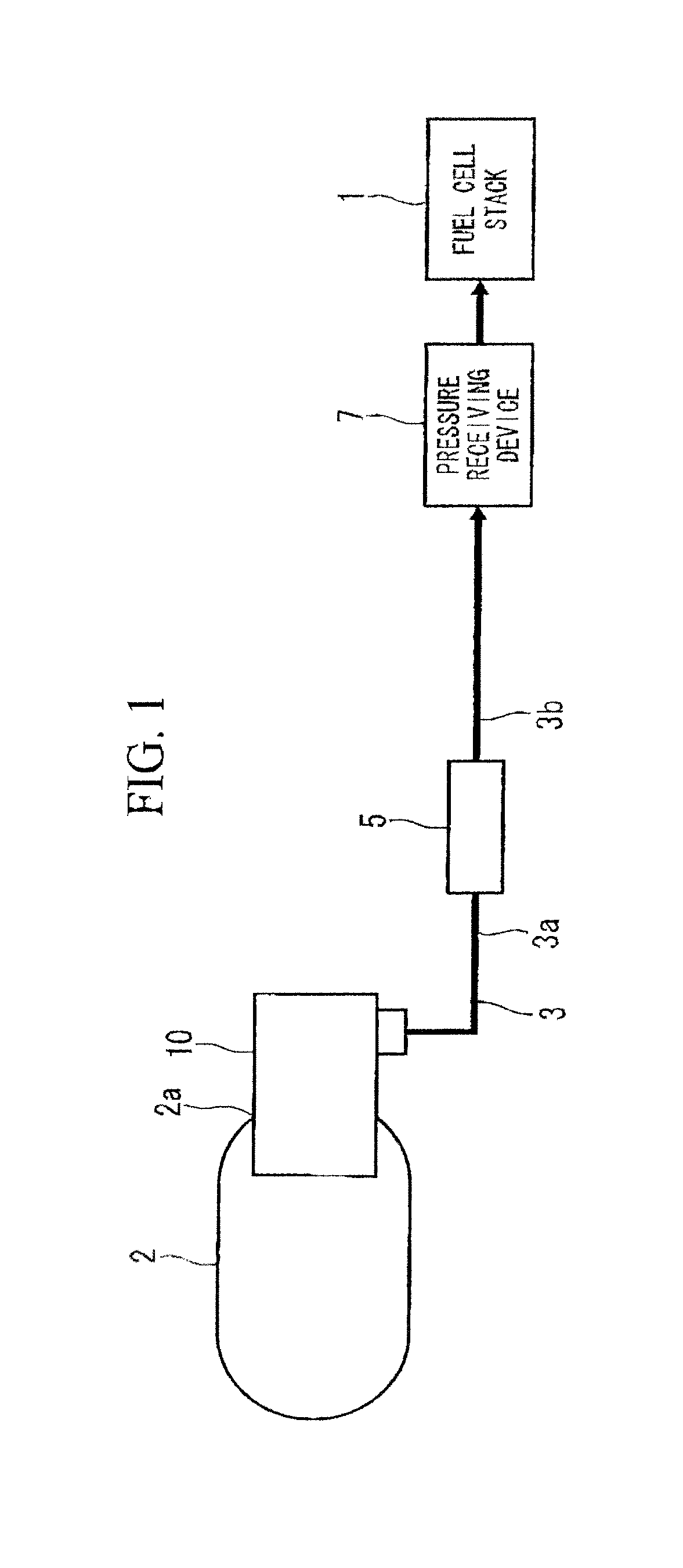Pressure reducing valve having shutoff mechanism
a technology of pressure reducing valve and shutoff mechanism, which is applied in the direction of fluid pressure control, process and machine control, instruments, etc., can solve the problems of increasing the size or cost of a product, and achieve the effect of preventing degradation of the contact surface, reducing the minimum closing load of the valve body, and reducing the size or cost of the produ
- Summary
- Abstract
- Description
- Claims
- Application Information
AI Technical Summary
Benefits of technology
Problems solved by technology
Method used
Image
Examples
Embodiment Construction
[0031]Hereinafter, an exemplary embodiment of the invention will be described by referring to the drawings.
[0032]FIG. 1 is a schematic configuration diagram illustrating a fuel cell system, where reference numeral 1 denotes a fuel cell stack (a fuel cell) which generates electric power by receiving hydrogen as fuel and oxygen as an oxidizing agent. The fuel cell stack 1 is, for example, a polymer electrode fuel cell (PEFC), and is formed by stacking plural cells each of which is formed by sandwiching a membrane electrode assembly (MEA) using separators (not shown).
[0033]A hydrogen gas of a predetermined pressure and a predetermined flow rate is supplied from a hydrogen tank 2 (a high-pressure fluid supply source) storing high-pressure hydrogen to the fuel cell stack 1 through a hydrogen supply passageway 3, and air of a predetermined pressure and a predetermined flow rate is supplied to the fuel cell stack 1 through an air supply device (not shown).
[0034]The hydrogen tank 2 is forme...
PUM
 Login to View More
Login to View More Abstract
Description
Claims
Application Information
 Login to View More
Login to View More - R&D
- Intellectual Property
- Life Sciences
- Materials
- Tech Scout
- Unparalleled Data Quality
- Higher Quality Content
- 60% Fewer Hallucinations
Browse by: Latest US Patents, China's latest patents, Technical Efficacy Thesaurus, Application Domain, Technology Topic, Popular Technical Reports.
© 2025 PatSnap. All rights reserved.Legal|Privacy policy|Modern Slavery Act Transparency Statement|Sitemap|About US| Contact US: help@patsnap.com



